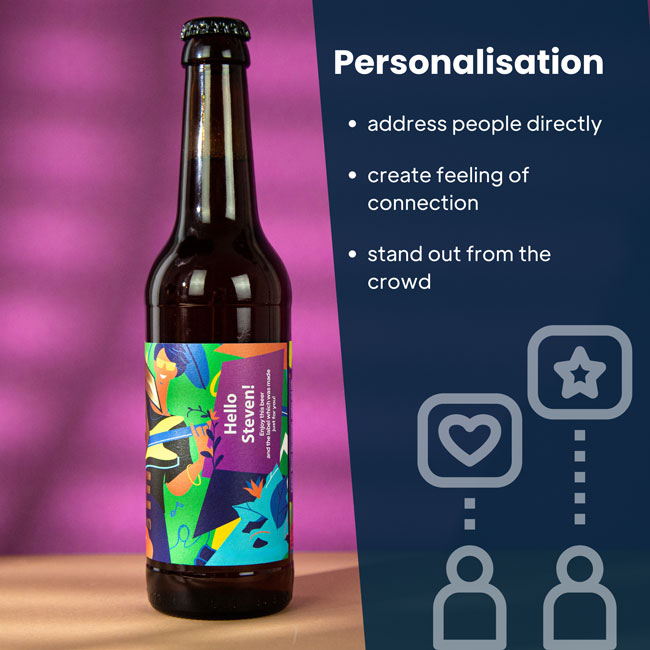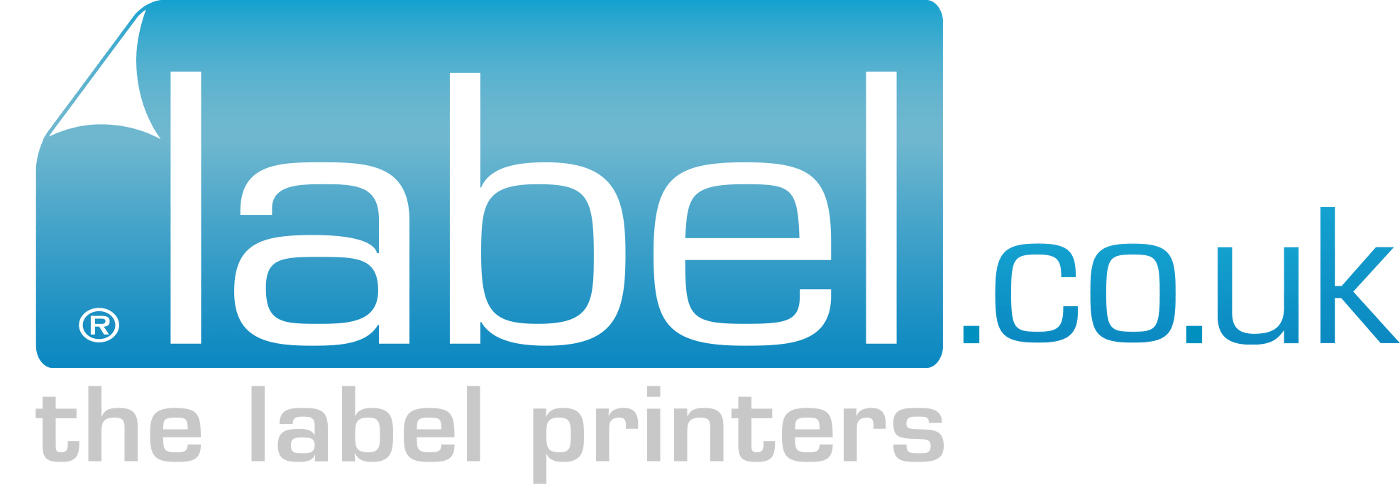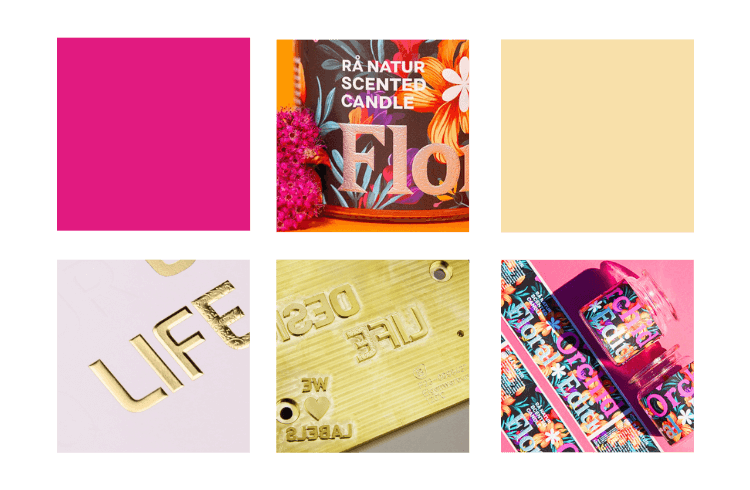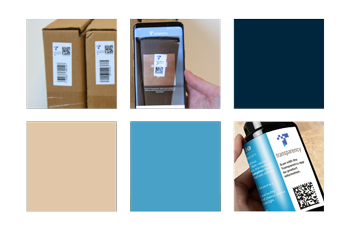02 September 2024
Personalised products and packaging allow you to communicate with your customers on a special level. This communication is something that consumers increasingly value and actively seek. When they feel specifically addressed, customers are more likely to notice and consider your products. Thus, personalisation can boost customer interactions and result in higher revenue, making it a promising marketing strategy well worth looking into. However, it is also a complex subject and needs careful consideration before implementation. Luckily, you have come to the right place. This blog article provides guidelines, inspiration, and incentives to get you started with your personalisation efforts.
Why Personalisation Works
The impact of personalisation is not a new phenomenon. Even in the 60s US economist Peter F. Drucker emphasised the significance of personalised communication and marketing. According to him a business’ actions should be adjusted to consumers’ needs and aimed at their fulfilment. This so-called customer centricity is a well researched and successful policy, implemented by many companies (Drucker).
The success of personalisation is attributed to many reasons. Once you established a personal communication with your customers brand loyalty will increase. On top of that, purchase frequency is likely to increase as well as keeping your existing clients engaged and motivated to invest in your brand. Some might even go as far as sharing your products on their social media accounts or otherwise spread the word, thereby further amplifying your reach, and driving sales.
So, personalising your products will boost your revenue and create a more profound connection with your customers. When they are offered products that feel tailored to their individual preferences — whether it is through customisable options, exclusive designs, or personalised packaging — consumers are more likely to perceive the value in what your brand offers.

How to Do It
One of the most well-known forms of personalisation is putting names on products. Reading their names on your products can catch customers’ attention in an instant. Large corporations such as Coca Cola have shown the efficiency of this approach. Though this is evidently a popular engagement strategy, you can get a lot more creative.
Progressing digitalisation offers possibilities to communicate with your customers in an individual and innovative manner. Including QR codes with different digital contents in your label designs is a creative approach to providing personalised experiences to your (potential) customers. With digital printing you can easily incorporate QR codes on your product labels. The digital technology ensures a sharp printing image, which is vital because otherwise the codes’ legibility might be compromised.
By diversifying your products’ looks you can expand your reach. After all, different patterns and designs appeal to different people. A creative and relatively easy way to innovate your product design is HP mosaic. It is a software that creates varying, unique backgrounds for your product labels. All you need to provide for it to work is a base pattern, from which the software will randomly choose excerpts to create an infinit number of unique canvases. This technology is particularly popular for special editions but can also operate as a personalisation tool.

Another creative way to motivate people to interact with your products is to make them collectable. Designing labels or packaging that come in sets of three or four, appeals to an intrinsic desire to collect things (Macdonald), thus creating an incentive to repeatedly buy a product. You could even establish different series of these collectables, further amplifying motivation to purchase your products more than once.
Apart from appealing to the section of your audience that reacts well to visual stimuli, you could also provide different texts on your packaging to entice those that like to read a little story. The text could be anything you like: a story about your company or your products, a poem, an interesting piece of information you want to share, or even your favourite joke – anything goes.
More Tips for Your Personalisation Efforts
By thoroughly evaluating your tools and resources, you can maximise the effectiveness of your personalisation efforts and deliver more relevant, impactful experiences to your audience (Morley). Your tools and resources are the key to every substantial marketing strategy. Whether it is your team, your research tools or your razor-sharp mind – you should take a look at all resources at your disposal.
One of the most valuable assets in this endeavour could be your CRM system. Depending on the software you use, it could offer immensely useful features to help you create targeted marketing campaigns. You should be on the lookout for handy features such as segmentation, automation, and data tracking. These features can make your life in marketing a whole lot easier.
In addition to evaluating the technological features available to you, take a look at your (wo)man-power. Do your team have the necessary know-how and skill to create the personalised contents you need? If not, it might be worth to invest in trainings or partnerships with experts (Donlan).
Try It Yourself!

In conclusion, personalisation is a great means to catch consumers’ attention, and therefore, the right path to sustainably expanding your reach. It is a strong asset to include in your marketing strategy and offers you a creative outlet while also being an opportunity to increase your sales. Keep in mind that people want to be entertained. The more innovative your ideas are, the more people will notice your products. So, don’t be afraid to think outside of the box!
Now it’s your turn! Let your creativity run free and make the best of your products.
Sources:
Donlan, Kirk. “What Is Personalized Marketing? Strategy, Examples & Trends.” Emarsys, 3 Mar. 2023, emarsys.com/learn/blog/what-is-personalized-marketing/.
Drucker, Peter F. The Practice of Management. Routledge, an Imprint of the Taylor & Francis Group, 2011.
Macdonald, Sharon. “Collecting Practices”. A Companion to Museum Studies, Wiley-Blackwell, Chichester, West Sussex, U.K, 2011, pp. 81–97.
Morley, Katie. “Personalized Marketing: What It Is, Benefits & Real-Life Examples.” Insider, 14 Aug. 2024, useinsider.com/personalized-marketing/.

Katharina Crusius
Marketing



